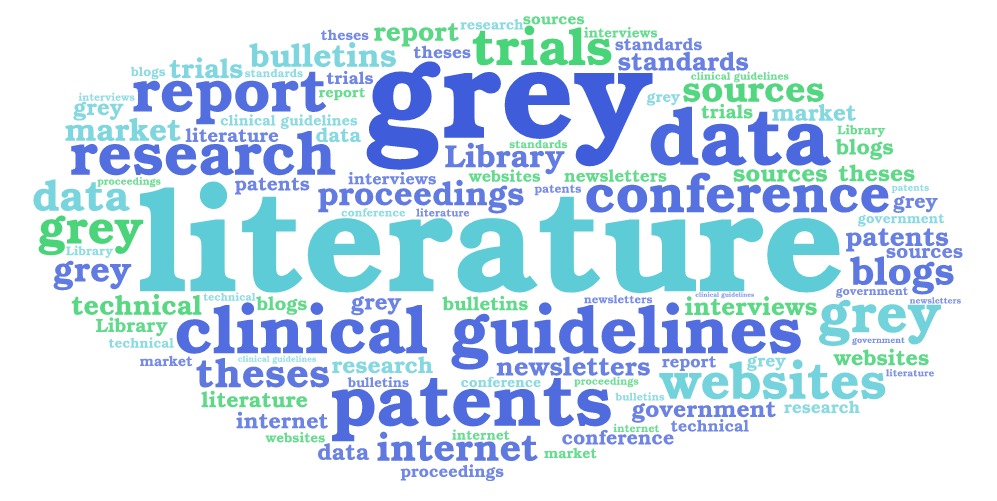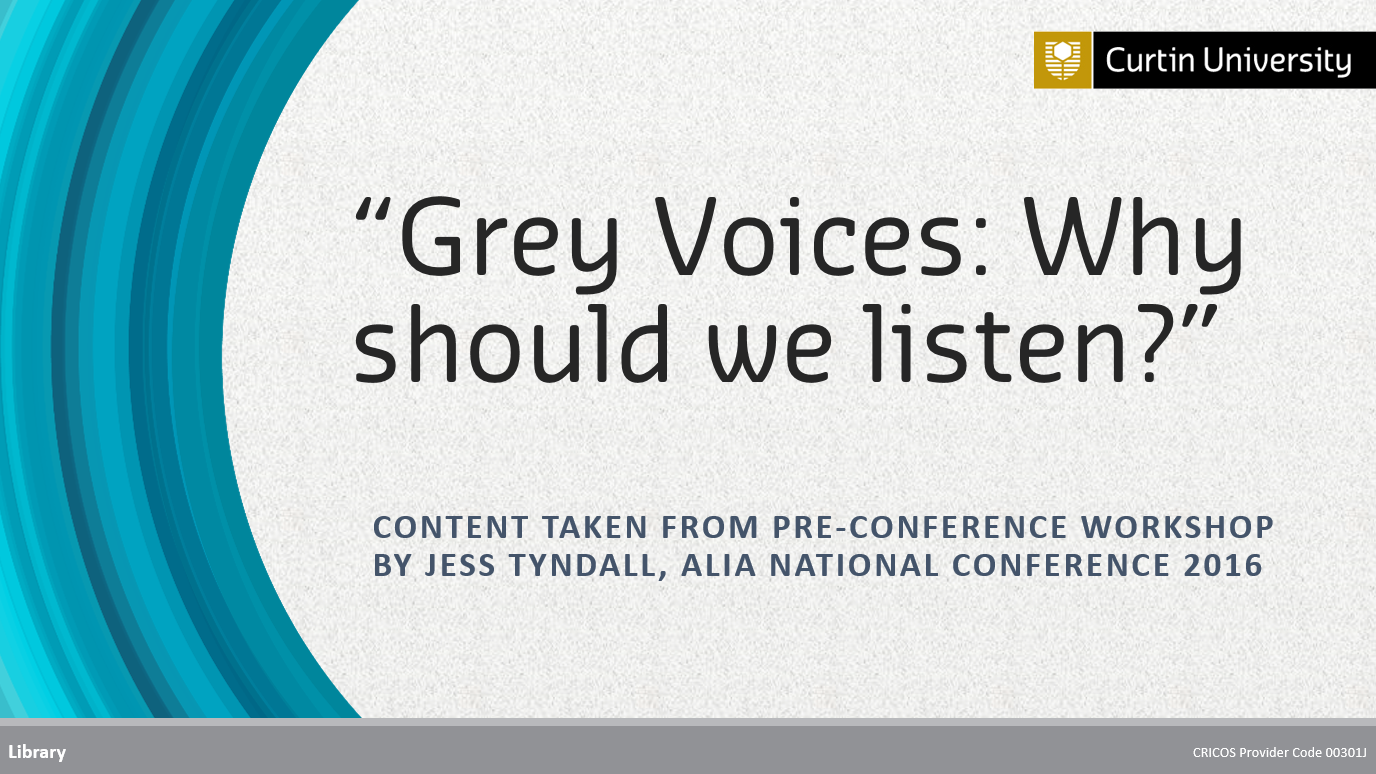Systematic & scoping reviews
What is grey literature?
Grey literature refers to both published and unpublished research, produced by government, academia, business and industry, that is not controlled by commercial publishers.
Some examples of grey literature include:

- Government reports
- Statistical publications
- Policy statements
- Working papers
- Research reports
- Fact sheets
- Conference proceedings
- Conference papers
- Legal documents
- Manuals & handbooks
- Brochures
- Bulletins
- Newsletters
- Theses
- Trial registers
- Datasets
- Discussion papers
- Surveys, interviews & questionnaires
Why use grey literature?
- A review can be biased when it fails to report crucial information that may be hidden in some grey literature. A search of grey literature is one way to address potentially biased reporting of research results in published material. Grey literature can help address biased reporting of research results (publication bias) and provide a more balanced view of a topic.
- It can be a good source of up-to-date literature for newer areas of research.
- In some topic areas (e.g. social sciences, government policy), a large amount of the evidence is communicated through grey literature.
Finding & documenting grey literature
-
Grey lit searching for dummies
Blog post about making a plan -
Develop your grey lit search strategy - University of Toronto Libraries
Includes template for finding and documenting grey literature
Where can I find grey literature?
The Internet is now a major source for dissemination and retrieval of grey literature and often is a good starting point to a topic area. Search or browse the websites of key organisations in your research area. These may include: government agencies, academic or research institutes, professional associations, and advocacy groups. Depending on the focus of your topic, the following sources may be useful:
Australian websites:
International websites :
Library databases
As well as journal articles, many library databases also index other types of literature including conference papers, reports, theses and government documents.
- Scopus and Web of Science index conference papers and technical and other reports.
- ProQuest indexes dissertations and theses, and conference papers and proceedings.
- Informit (an Australian database) indexes conference papers and many government documents.
Most library databases provide the facility to limit by publication or document type, which will allow you to narrow your search to grey literature sources.
- Specialised databases such as GreyNet International index grey literature in a number of subject areas.
- Trove is an overarching search interface to search the content of most Australian libraries as well as archives and repositories.
- Institutional repositories, such as espace at Curtin, hold digital theses and research papers. Australasian Open Access Repositories provides a list of research repositories.
More grey literature databases are available through the Cochrane Handbook (4.S1 Technical Supplement, 1.1.6)
Search engines such as Google are also useful when searching for grey literature. Note that:
- A simple search for your keywords is often the best approach
- Google searches will usually return large numbers of results so consider limiting your search by date (e.g. last 5/10 years), language (e.g. English) etc. in Advanced Search.
When you perform a Google search you can also limit to particular domains or by file type. Most of the grey literature available on the Web is in the form of PDF documents. Also consider restricting your search to the .org and/or .gov domains.
e.g. vaccination rural Australia filetype:pdf or vaccination rural Australia site:org
Medically focused search engine that searches across public and deep web resources in real time. Sources include commercial databases, medical societies, NIH resources, patents, and other government resources.
A US resource that searches billions of documents from government agencies, global health organizations, medical journals, and reference sites.
BASE (Bielefeld Academic Search Engine)
Search engines for academic open access web resources, providing more than 100 million documents from more than 5,000 sources.
Evaluating grey literature
Grey literature is usually not subject to the same peer-review process or quality checks as books, journals and other commercially published literature. It is important to critically evaluate grey literature to ensure it is of a suitable quality to include in your systematic review.
The AACODS checklist is a useful tool for evaluating grey literature: ACCODS checklist [PDF, 560kB]
Grey literature PowerPoint
Have a look at this PowerPoint presentation for a comprehensive overview of grey literature in the Heath Sciences (click on the image to view):
